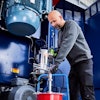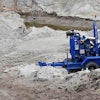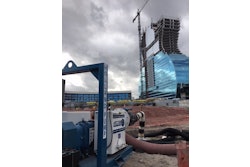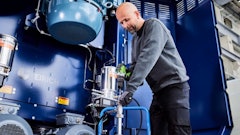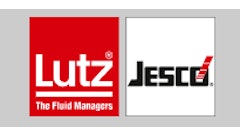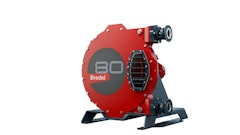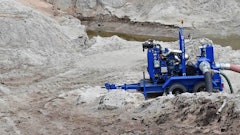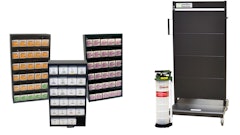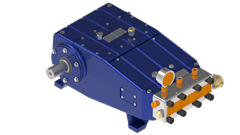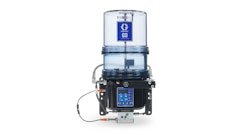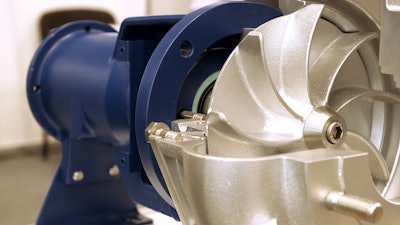
The pump category has come a long way, says Don Looyer, director of sales and marketing for Koshin America.
“Before, it was just pumping water, but nowadays, there’s so much more to it,” Looyer says. “Every company has such a wide variety of pumps, and the types of pumps and fuel sources have expanded—there’s so many different options. I certainly see the category growing in the feature.”
Industry experts pump out their knowledge of current trends and share what’s coming down the pipeline to help rental companies assist their customers in choosing the right pump for each application.
What’s trending
1. Increased rentals
As infrastructure needs have increased, more contractors have tended toward renting pumps instead of buying them, according to Bobby Zitzka, vice president of sales at Thompson Pump.
“Contractors know they can rely on renting pumps wherever they are, and it’s convenient—it doesn’t make sense for them to buy a new pump every time they do a different task,” Zitzka says. “So, rather than owning a bunch of different specialty pumps, they can just rent them.”
An increase in rentals has spurred rental companies to start specialty pump divisions.
“That all requires specialized knowledge and equipment, so there’s more demand from the few people who are able to do that type of work,” Zitzka says.
2. Automation
To make users—and rental companies—more efficient, many pumps now come equipped with telematics and automated features.
“Pumps are often running 24 hours a day and over weekends and holidays when no one is on-site,” Zitzka says. “Having that connection to the machine and the ability to send out warning signals, rental companies can check in on pumps remotely without having to drive to the job.”
Zitzka adds that the pumps will notify users whenever they run out of fuel or if there is a maintenance requirement.
3. Electric submersible pumps
The rental market has recently seen a shift from diesel-powered trailer-mounted pumps to electric submersible pumps, according to Mike Grant, Tsurumi Pump's portable product and rental market manager.
“Electric submersible pumps in certain applications can do the same job for lower operating costs along with lower maintenance costs,” Grant says. “There is also less oversight and monitoring involved.”
For example, Grant points to sewage bypass jobs where a diesel-driven trash pump has been replaced with an electric submersible as union rules require that an operator be present 24/7 when a diesel engine driven pump exceeds a certain horsepower—those same requirements do not apply to an electric submersible pump.
Grant adds that while a Tsurumi electric submersible pump will include a maintenance list with six-month and yearly checks, a diesel-driven pump will most likely require service checks or servicing daily, at 250 hours, at 500 hours and at 1,000 hours continually.
Matt Olivieri, product manager, construction, mining and rental products at Gorman Rupp, adds that the trend toward electrification is also due to the sporadic cost of fuel.
"Electric may have a higher initial cost, but it has the potential to save the company and the customer money over the duration of the job," Olivieri says.
However, Grant cautions that a generator or direct power source would be needed and that end users should take into consideration space restrictions as well.
Looyer adds that some users have anxieties over range concerns.
“We will see more manufacturers that have battery-powered equipment, and certainly down the road, as the technology improves, I see that being a viable option,” Looyer says.
4. Engine efficiency features
To gain the biggest return on investment with pumps, many rental companies are becoming more aware of run times and efficiency features on pumps.
“We’re finding a lot of municipalities with stricter EPA guidelines, so a lot of manufacturers are trying to be up to date and being more efficient with the engines being used,” Looyer says.
Incorporating fuel injection features for gas engines and increasing the tier requirements for diesel engines are among the efficiency updates.
“These engines run a lot cleaner, and they’re more efficient, which is giving the user more run time,” Looyer says. “The downside is that they’re a bit more expensive upfront, but with the quality of the products, users will get longevity out of it and will get a return on their investment because that’s what everyone is looking at, especially in the rental industry.”
Olivieri notes that a working knowledge of Stage 5 engines is necessary when relying on that type of engine.
"Understand the changes and requirements of these engines to properly apply them to pumping jobs to be able to minimize your maintenance costs," Olivieri says.
What to consider
In order to help customers decide what type of pump they should rent, rental companies should ask a variety of questions.
“You really want to understand all of the equipment it’s going to take to do the job and make sure you’re providing that equipment as well,” Zitzka says. “We provide a checklist to our customers because you really want to understand the full picture of what the customer is trying to accomplish.”
The experts recommend asking these questions:
- What’s the application?
- What are you trying to accomplish?
- What material will be pumped?
- What is the size, length and type of pipe?
- What's the water temperature?
- Does the application involve clean or dirty water?
- What’s the suction lift?
- How far are you pumping?
- Does the site include a power source?
- What is the duty point?
- What percentage of solids will be pumped through?
- How high is the highest point where you’re pumping?
- What type of hoses are you using?
- Is the ground elevated or level?
“You want to provide a good service to your customer, save them the most amount of money and provide them with a provide they actually need,” Looyer says.
Finally, if it’s practical, Zitzka recommends accompanying customers to walk the job as they may be able to see other factors that weren’t previously described, such as the spacing of the job.
Maintenance musts
If used properly, pumps will last a long time, according to Zitzka.
For example, if users select the wrong pump for an application, damage such as cavitation can occur.
Cavitation, or when the liquid in a pump turns to a vapor at low pressure, happens when there is not enough pressure at the suction end of the pump.
Other maintenance items include inspecting pumps regularly for damages, changing oil and filters on additional gas and diesel pumps and making sure the inspector has a working knowledge on various parts of the pumps.
“Have a good process to check out the pumps, so you can test them properly before they’re sent out for rent,” Zitzka says.
Looyer adds that rental companies should make sure they’re properly cleaning pumps before they are rented out again.
“When you're renting out a pump, customers know they're going to return it, so they're not going to take care of it as if it’s their own,” Looyer says. “They could even be using a clear water pump and pumping cement through it. So, it’s common sense to make sure the pump gets rinsed out thoroughly on a regular basis.”
Be wary
In an effort to cut corners, there are manufacturers out there that will put an inexpensive imported pump (wet end) on to an engine and sell it as a quality pump, according to Don Looyer, director of sales and marketing at Koshin America.
“The only advantage is that it lowers the initial cost, but because the pump is lower in quality, you will have many more repair issues, causing downtime and loss of revenue,” Looyer says. “We have seen this more in the marketplace. It goes back to the old saying, ‘you get what you pay for.’”


